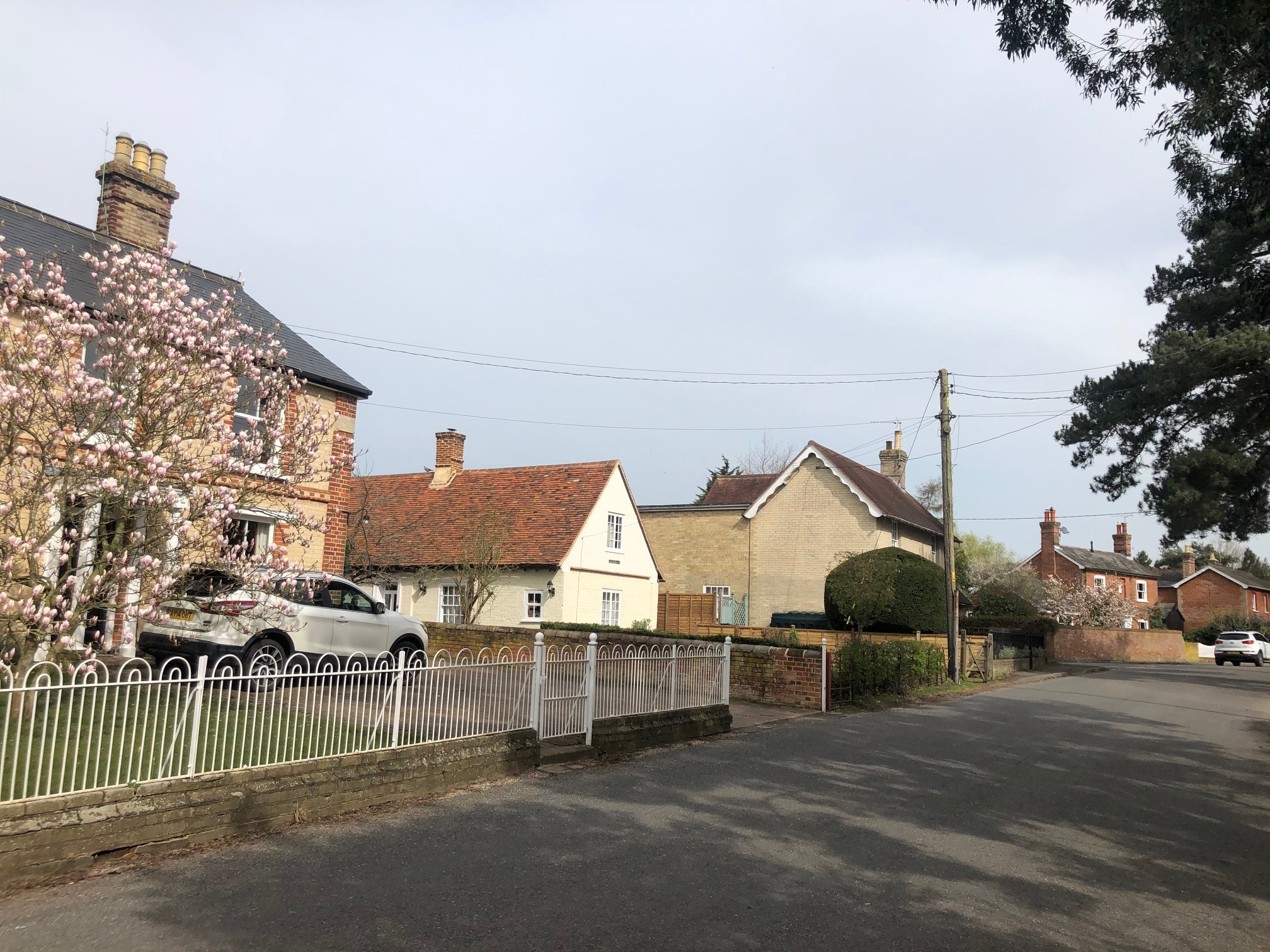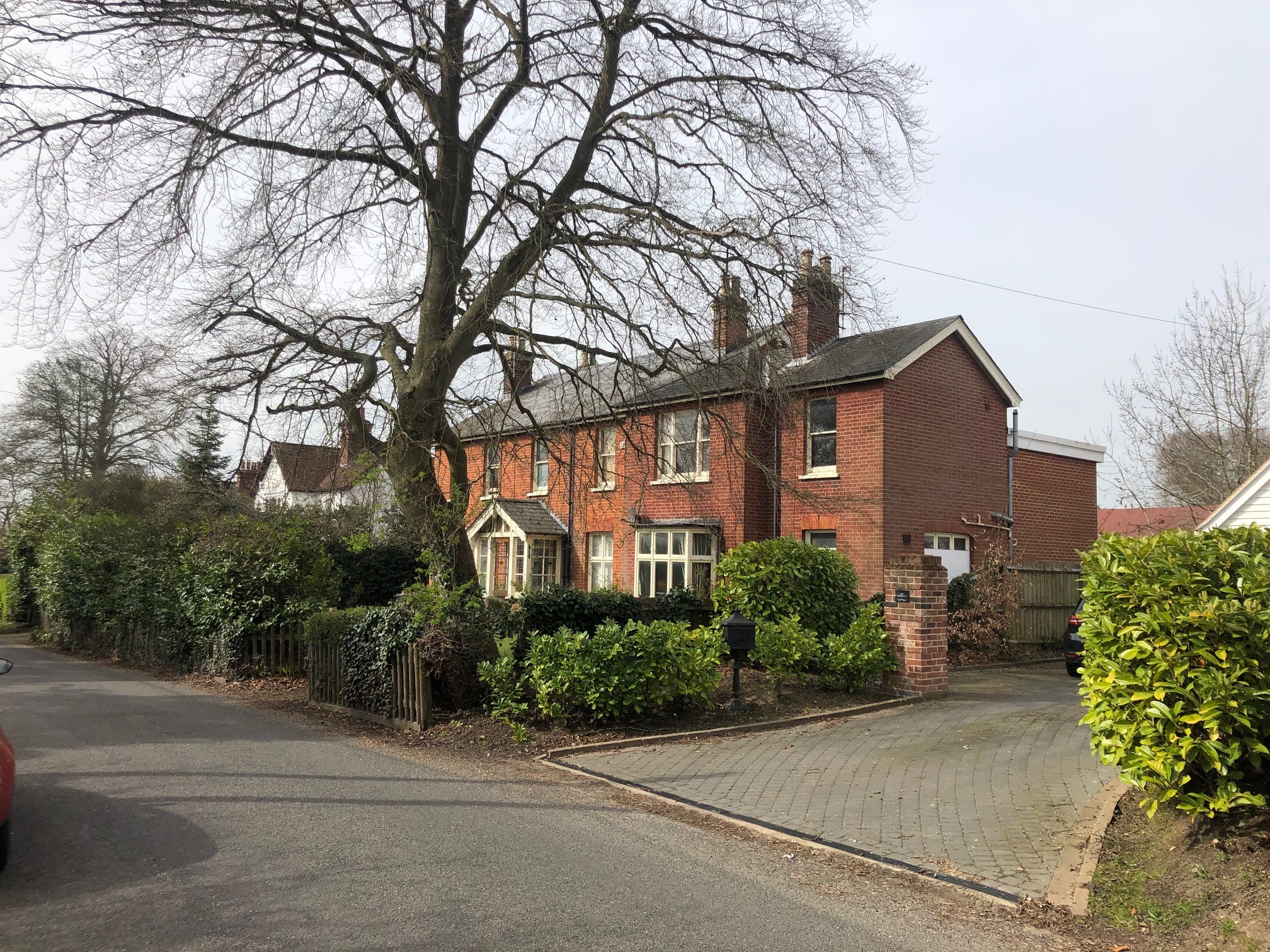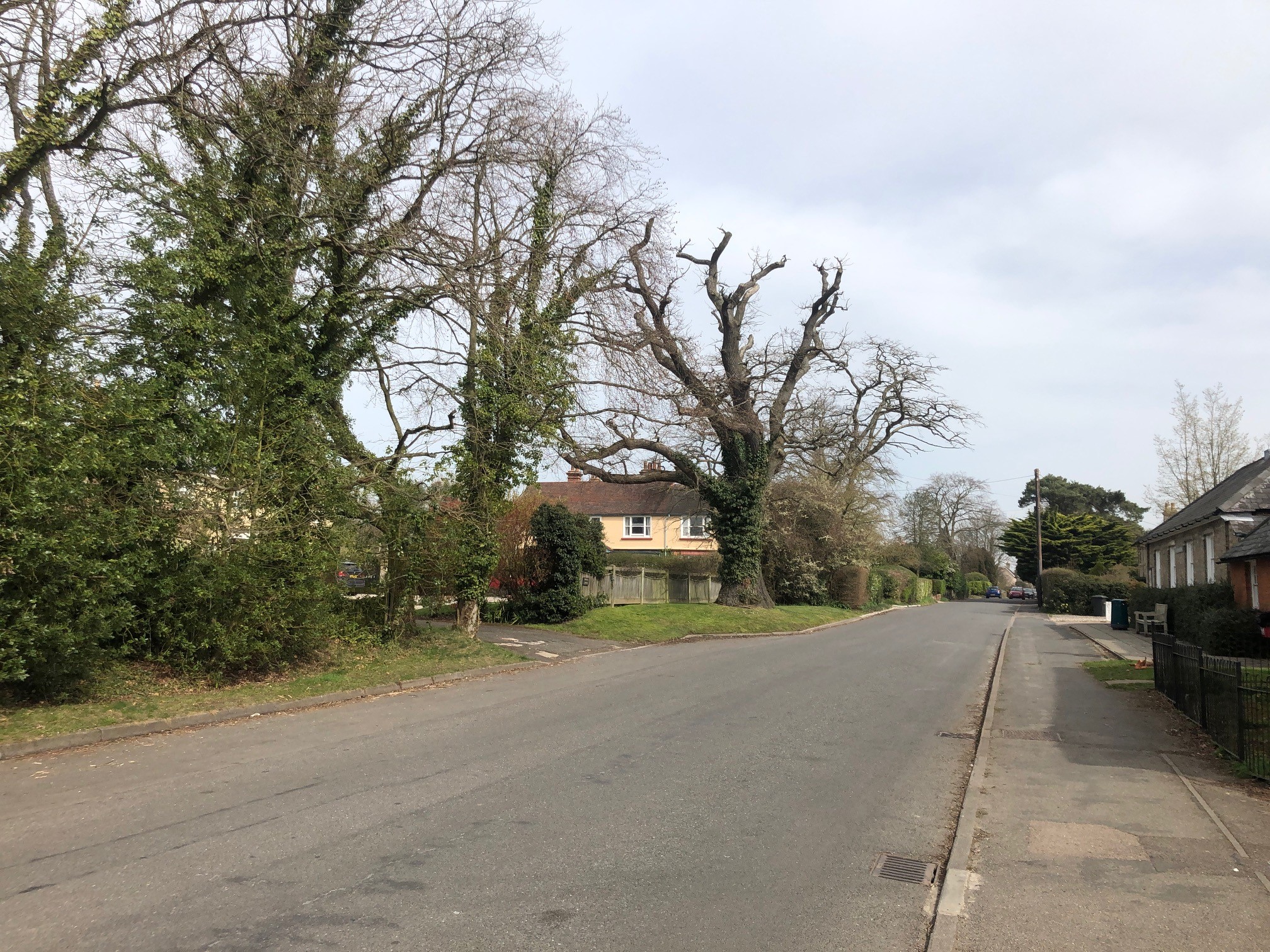Gaston Street West Side
Gaston Street has been an important thoroughfare in East Bergholt for centuries, linking the village centre and The Street in the south, with the area once known as Gaston End in the north, where it now adjoins the B1070. Today it lies on a bus route into the village and is a main access route. The street widens as it approaches the village centre.
Gaston Street is a primarily residential street with a wide variety of house types, sizes and styles. The two exceptions are Richardson’s farm which remains a working farm, with its listed farmhouse situated towards the northern end, and the single storey Lambe School, founded in 1594 and now used as a village hall, located closer to the village centre. The latter sits opposite some large houses built in classical style in the late 20th century.
Gaston Street remained largely undeveloped until Victorian times. In 1851 there were only 16 houses on Gaston Street with Tufnells located at one end and The Gothics at the other. Since then any gaps have been filled to provide an eclectic and interesting streetscape with 10 listed buildings scattered on both sides of the street intermixed with more modern development with a wide range of building styles. The street scene is enhanced by the number and type of large mature trees, many with TPOs.
- 8
- Gaston Street has been an important thoroughfare in East Bergholt for centuries, linking the village centre and The Street in the south, with the area once known as Gaston End in the north, where it now adjoins the B1070.
Details
Historical Importance
The east side of Gaston Street up to and including Tufnells, and with back gardens overlooking the Heath, is already included within the Conservation Area boundary established in 1968 and extended in 1975. It’s historical importance is clearly therefore well established. However this designation does not recognise the historical importance of Gaston Street in its entirety. The western side of the street from Hadleigh Road to Elm Road contains three listed properties ( Fuschia Cottage, Tudor Cottage and Throwers) and a variety of fine and mature trees with preservation orders towards Hadleigh Road. Two of the listed properties from the 17th and 18th centuries provide good examples of smaller single storey cottages associated with the agricultural history of East Bergholt. Tudor Cottage though is a larger two storey house built in the late 16th century and its situation serves to reinforce the importance of Gaston Road at this time. The listed trees closer to Hadleigh Road on the west side, and a number of grander homes with large rear gardens and listed trees delineating their rear boundaries have been built close to the village centre. These houses are not listed but complement the character of the overall street scene. In addition there are alms houses (St John’s) here.
It is important that any consideration of the historic importance and heritage value of Gaston street, and its contribution to the character of East Bergholt is not a partial one sided view but incorporates and is reflective of both sides of the street.
Assessment of Special Interest.
The listed buildings referred to above.
- The fine mature trees referred to above
- The overall character of the street embracing the variety of architectural styles and listed properties on both sides
- The wide and open nature of the street towards its southern end with larger properties and the narrowing street with smaller homes and clear links to East Bergholt’s agricultural heritage as one travels away from the village centre.
Reasons for Inclusion
The west side of Hadleigh Road is not an island. It is integrally linked in its history and in its visual impact to the east side of the road which is already part of the Conservation Area. The integrity of the Conservation Area in this part of the village can only be protected by recognising that Gaston Street is one entity with each side of the road complementing the other. Both sides also merit protection in their own right.
Without this proposed extension to the designation the impact of any development outside the extended area has potential to be detrimental to views out of the area and the overall character of the area will be compromised.
This is particularly pertinent should any development take place in front gardens on the west side of Gaston Street, or if the larger rear gardens of the houses at the southern end of the street backing onto Hop Meadow succumb to development pressure.
This potential impact deserves serious consideration and by designating this area the risks of any inappropriate development and the likely harm to the current Conservation Area can be protected.
Relevant Reading, Sources
- East Bergholt Conservation Area Designation, Babergh DC
- Babergh DC website
- Dedham Flatford and East Bergholt, Ian Yearsley
- East Bergholt Heritage Landscape Study, Heritage Collective
- Historic England
- British Listed Buildings
- 8
- Gaston Street has been an important thoroughfare in East Bergholt for centuries, linking the village centre and The Street in the south, with the area once known as Gaston End in the north, where it now adjoins the B1070.



